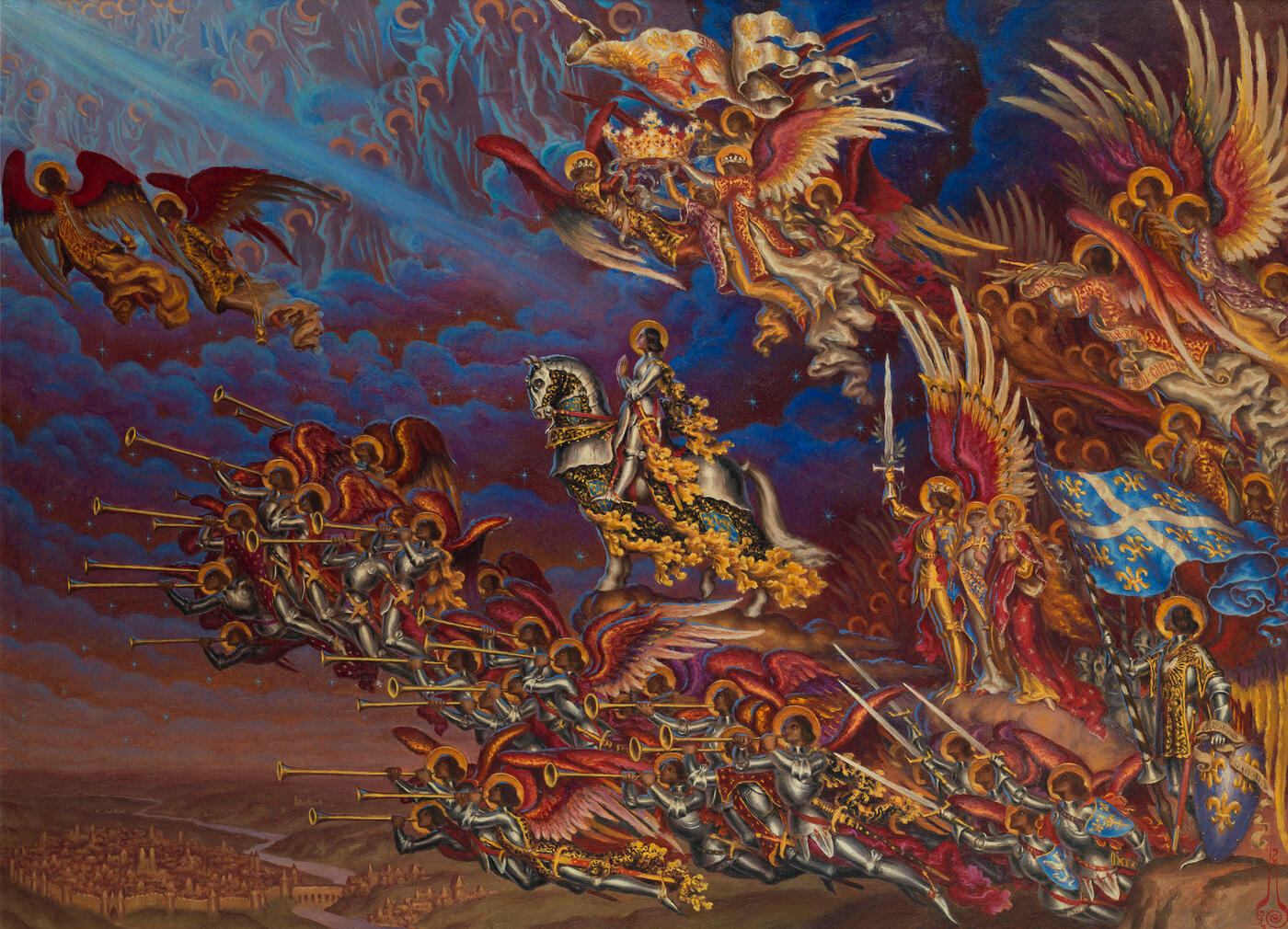26 November 2014 Russian Art Auctions
26 November 2014

§ 77. KALMAKOV, NIKOLAI (1873-1955)
The Triumph of Joan of Arc, signed with a cipher and dated 1930.
Oil on cardboard, 59.5 by 81 cm.
300,000-500,000 GBP
Exhibited: Kalmakoff, L’Ange de l’abime, 1873–1955, et les peintres du Mir Iskousstva, Musée-galerie de la Seita, Paris, 26 March–17 May 1986.
Literature: Exhibition catalogue, Kalmakoff, L’Ange de l’abime, 1873–1955, et les peintres du Mir Iskousstva, Paris, Musée-galerie de la Seita, 1986, p. 76, No. 35, illustrated and listed with incorrect size.
J. Bowlt, Yu. Balybina, Nikolai Kalmakov i labirint dekadentstva, 1873–1955, Moscow, Iskusstvo-XXI vek, 2008, p. 241, illustrated; p. 242, mentioned in the text; p. 365, listed with incorrect size.
Nikolai Kalmakov’s The Triumph of Joan of Arc is one of the most potent and brilliant masterpieces of Russian Symbolism. Kalmakov’s creative legacy is full of personifications of dark forces, otherworldly spirits, monsters and angels. This picture, however, symbolises the culmination of a human victory over this world of darkness. It was painted in France, where Kalmakov had already been living for more than five years.
In 1931, France was preparing to celebrate the 500th anniversary of Joan of Arc’s martydom. Shortly before, she had been beautified in recognition of the spiritual role she provided to the French people during the First World War. The name of the Maid of Orleans was never away from the headlines. It served as a unifying force, inspiring an enthusiasm and a faith in humanity that had been lost in times of war.
Not only French, but also Russian artists working abroad responded to this event with entire series of works. Nicholas Roerich created a Joan of Arc triptych and Dmitri Stelletsky – a monumental composition of the same name. It was Nikolai Kalmakov, however, who was commissioned to create the painting that would commemorate the national heroine of France. In 1930, a chapel dedicated to St Joan was being built for the fifth centenary, and the artist was invited to decorate it with his own canvasses.
The choice of Kalmakov was not accidental. Arriving in France from Russia at the height of his fame, he immediately impressed his contemporaries with shocking canvasses that veered on the edge of mysticism and madness. He took the Symbolist tendency in European Art Nouveau to its aesthetic limits and the world of the images he created made Kalmakov an apologist for a movement already in decline.
In The Triumph of Joan of Arc the artist encapsulates a pivotal point in the cult of the new saint – Joan’s coronation, accomplished by the will of God, and her consecration amongst the saints. The fantastical and decorative image of the Kingdom of Heaven is both painfully vivid and at the same time hyperreal. With the authenticity of a visionary revelation, the artist presents the viewer with a grandiose denouement in which a historical legend acquires the potency and compelling force of the Christian myth. The luminous image of the Maid of Orleans becomes a heavenly counterpart to the artist’s favourite Symbolist theme of the femme fatale.
The Triumph of Joan of Arc is the first and most important work in the cycle conceived by Kalmakov. The compositions he devised next were Joan of Arc before the Judges (1931) and a diptych called The Fate of Joan (1931). For unknown reasons, however, the work on the decoration of the chapel was interrupted and these pictures remained unfinished. As a consequence, The Triumph of Joan of Arc presented here at auction is not simply central to the cycle he planned, but also Kalmakov’s only completed work on the subject. What is more, the talent with which the artist combines existential and symbolic elements in the painting makes it the most important milestone in his creative work. It is also important as a historical document reflecting the spiritual state of early 20th century society.
Notes on symbols:
* Indicates 5% Import Duty Charge applies.
Ω Indicates 20% Import Duty Charge applies.
§ Indicates Artist's Resale Right applies.
† Indicates Standard VAT scheme applies, and the rate of 20% VAT will be charged on both hammer price and premium.